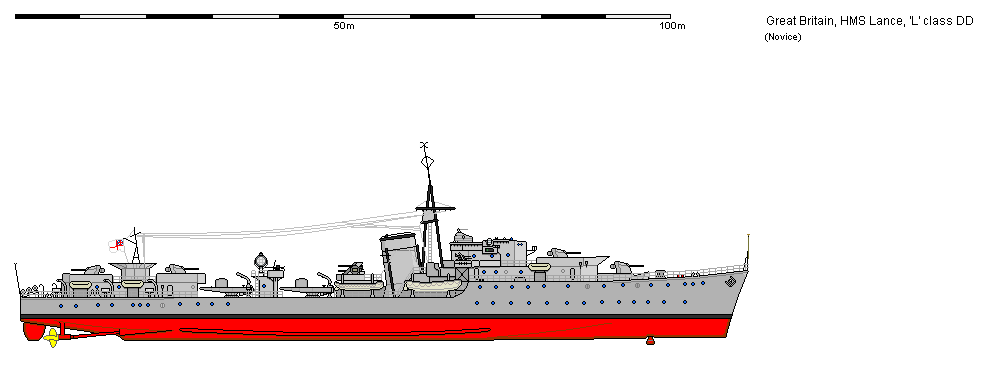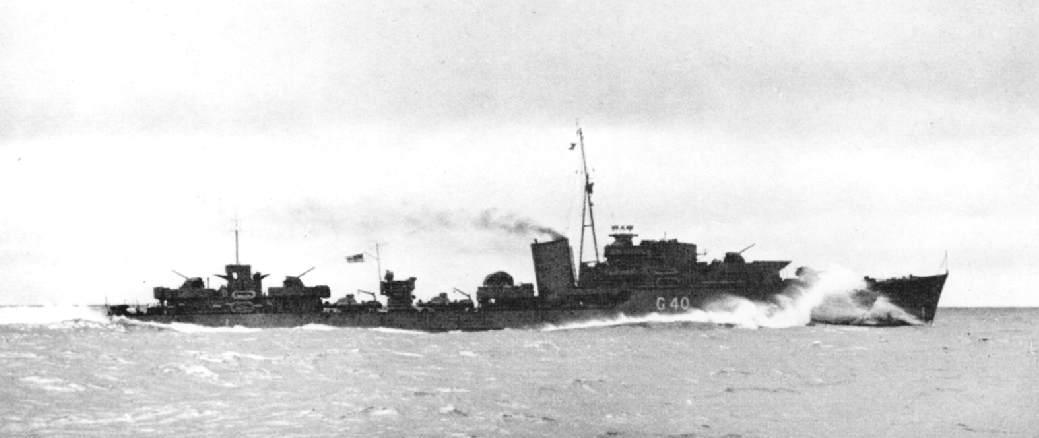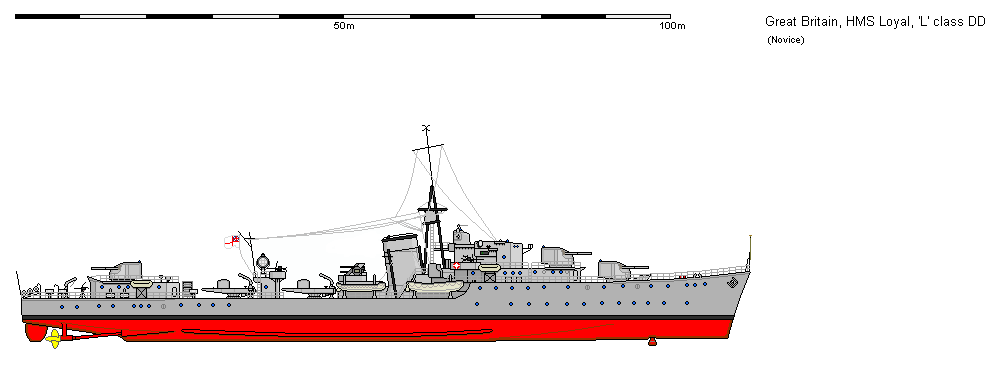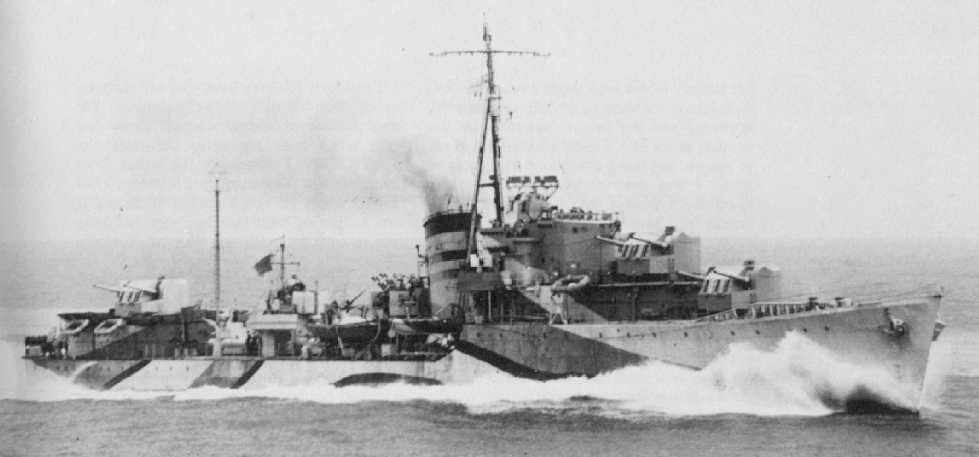Service history of HMS Jervis (from Wiki)
1939 (Home Waters)
When war broke out in September 1939, Jervis was under the command of Captain Philip Mack, and was leader of the 7th Destroyer Flotilla (DF) based in the Humber. The first six months of hostilities was taken up with sweeps across the North Sea, in "appalling weather conditions" which saw the Flotilla suffer a succession of storm and collision damage. During this time Jervis captured three blockade runners, one on the second day of the war, and helped search for the merchant ship SS City of Flint. In March 1940 Jervis was involved in a collision with SS Tor, a Swedish freighter, that put her in dock for the next three months for repairs.
1940 (Mediterranean)
During this time Mack, as Captain (D) led the Flotilla from Janus, and in May 1940 sailed with her for the Mediterranean to take command of the 14th Destroyer Flotilla. Jervis' pennant number changed to G00 around this time In July, after working-up trials, she joined him in Malta, where he resumed command. For the next two years Jervis saw action in a constant round of operations; sweeps along the coast, bombarding shore targets for the Army, protecting convoys to Malta, and screening major fleet movements.
1941
In 1941 Jervis was involved in a number of fleet actions. In March she was at Battle of Cape Matapan. In the course of the battle she was involved in the destruction of the Italian cruiser Zara which had been crippled by heavy guns in attempting to recover the Italian cruiser Pola, which had been stricken by an aerial torpedo. Then Jervis came alongside Pola and boarded her, taking off the wounded before, with the destroyer Nubian, torpedoeing and sinking Pola. In April she led the force that annihilated an Axis convoy at the action off Sfax. In May she was in the battle of Crete, where so many Royal Navy ships were lost, including her sister ship Kelly. During the summer Jervis ran supplies to the beleaguered port of Tobruk, and in December she led the destroyers at the first Battle of Sirte. On returning to Alexandria, she was damaged in the Italian human torpedo attack on the fleet there; (which was commanded by Lieutenant Luigi Durand de la Penne). This left her in dock for six weeks; the same attack crippled the battleships Queen Elizabeth and Valiant.
1942
Released at the end of January, she resumed operations. In April she joined the Malta Strike Force, although without her captain; Mack left Jervis in March due to ill-health and was replaced as captain of Jervis, and Captain (D), by A.L Poland. He would command her, and lead the 14th DF, for the next year. In March 1942, under Poland's leadership, she again led the destroyers at the second Battle of Sirte.
1943
On the night of 1/2 June, an Italian convoy of two supply ships escorted by a destroyer and a torpedo boat, was intercepted off the Straits of Messina by Jervis (Captain A.F Pugsley) and the Greek destroyer Queen Olga (Lieutenant Commander Blessas). A Wellington bomber dropped flares and after a short battle lasting half an hour, the two Allied destroyers sank the convoy and destroyed both escorts.
Jervis also saw action during the landings in Sicily, Calabria, Salerno, and Anzio, as well as operations in the Adriatic. She supported both the 8th Army and Yugoslav partisans. In the Autumn of 1943 Jervis was in the Aegean supporting the ill-fated operation against the Dodecanese Islands. On 16/17 October with HMS Penn, sank Sub Chaser UJ-2109 at Kalymnos.
1944 (Home Waters)
Having returned to Britain after a re-fit, and no longer Flotilla leader, Jervis saw action at the Normandy landings under Lieutenant Commander Roger Hill, and in the closing stages of the war. She decommissioned in September 1944, paying off at Chatham prior to a further, major re-fit.
1945 and post-war
Re-commissioned in May 1945, Jervis saw further service in the Mediterranean, policing the aftermath of World War II. She paid off into the reserve at Chatham in May 1946, and was then laid-up in the Gareloch where she was used for training of local Sea Cadets. Placed on the Disposal List in October 1947, she was one of a number of ships used for explosives trials in Loch Striven during 1948.
Fate
Jervis was handed over to the British Iron and Steel Corporation for demolition in January 1949 and allocated to by Arnott Young, arriving at Troon, on the Firth of Clyde for breaking up in September.



-2.jpg)



